
Paul Benjamin Auster is an American writer and film director. His notable works include The New York Trilogy (1987), Moon Palace (1989), The Music of Chance (1990), The Book of Illusions (2002), The Brooklyn Follies (2005), Invisible (2009), Sunset Park (2010), Winter Journal (2012), and 4 3 2 1 (2017). His books have been translated into more than forty languages.

The Cat in the Hat is a 1957 children's book written and illustrated by American author Theodor Geisel, using the pen name Dr. Seuss. The story centers on a tall anthropomorphic cat who wears a red and white-striped top hat and a red bow tie. The Cat shows up at the house of Sally and her brother one rainy day when their mother is away. Despite the repeated objections of the children's fish, the Cat shows the children a few of his tricks in an attempt to entertain them. In the process, he and his companions, Thing One and Thing Two, wreck the house. As the children and the fish become more alarmed, the Cat produces a machine that he uses to clean everything up and disappears just before the children's mother comes home.
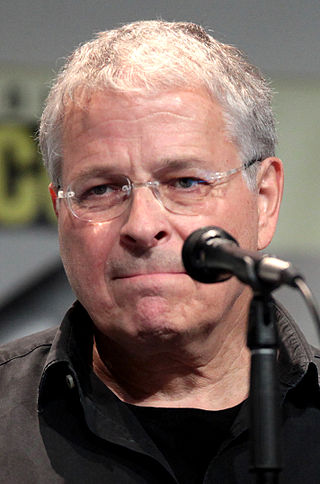
Lawrence Edward Kasdan is an American filmmaker. He is the co-writer of the Star Wars films The Empire Strikes Back (1980), Return of the Jedi (1983), The Force Awakens (2015), and Solo: A Star Wars Story (2018). He also co-wrote Raiders of the Lost Ark (1981) and The Bodyguard (1992), and is the writer-director of Body Heat (1981), The Big Chill (1983), Silverado (1985), The Accidental Tourist (1988), and Dreamcatcher (2003). He is known for updating old Hollywood genres—film noir, science-fiction, westerns—in a classical dramatic style with quick-witted dialogue, but dealing with contemporary social themes. As a director, he has made various personal films that examine characters and generations.

Moon Palace is a novel written by Paul Auster that was first published in 1989.
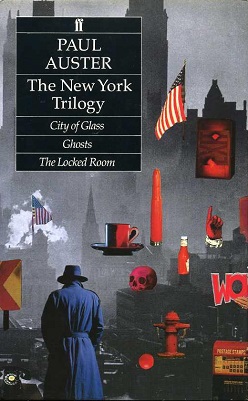
The New York Trilogy is a series of novels by American writer Paul Auster. Originally published sequentially as City of Glass (1985), Ghosts (1986) and The Locked Room (1986), it has since been collected into a single volume. The Trilogy is a postmodern interpretation of detective and mystery fiction, exploring various philosophical themes.
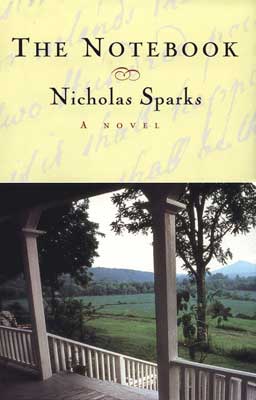
The Notebook is a 1996 romantic novel by American novelist Nicholas Sparks. The novel was later adapted into a popular 2004 film of the same name.
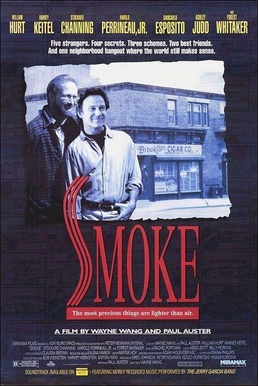
Smoke is a 1995 American independent film by Wayne Wang and Paul Auster. The original story was written by Paul Auster, who also wrote the screenplay. The film was produced by Greg Johnson, Peter Newman, Kenzo Horikoshi, and Hisami Kuroiwa. Among others, it features Harvey Keitel, William Hurt, Stockard Channing, Harold Perrineau Jr., Giancarlo Esposito, Ashley Judd, and Forest Whitaker.

The Book of Illusions is a novel by American writer Paul Auster, published in 2002. It was nominated for the International Dublin Literary Award in 2004.

Oracle Night is a 2003 novel by American author Paul Auster.

Lulu on the Bridge is a 1998 American romantic-mystery drama film written and directed by author Paul Auster and starring Harvey Keitel, Mira Sorvino, and Willem Dafoe. The film is about a jazz saxophone player whose life is transformed after being shot. After discovering a mysterious stone, he meets and falls in love with a beautiful aspiring actress, but their happiness is cut short by a series of strange, dreamlike events. The film was screened in the Un Certain Regard section at the 1998 Cannes Film Festival.

Mr. Vertigo is a novel written by the American author Paul Auster. Faber & Faber first published it in 1994 in Great Britain. The book fits well in Auster's bibliography, which has reappearing themes like failure and identity and genres like absurdist fiction, crime fiction and existentialism.

Light Yagami is the main protagonist of the manga series Death Note, created by Tsugumi Ohba and Takeshi Obata. He is portrayed as a brilliant but bored genius who finds the Death Note, an otherworldly supernatural notebook that allows the user to kill anyone by knowing their name and face, after it is dropped by the Shinigami Ryuk. Frustrated by the status quo and unfairness of the world, Light uses the Death Note to kill those whom he deems morally unworthy of life, masterminding a worldwide massacre as the vigilante Kira (キラ). Over the course of his efforts to create a world free of crime and evil, over which he would rule and reign as a godlike figure, Light is pursued by a special task-force, headed by a consulting detective known as L.

The Death of the Lion is an 1894 short story by Henry James.

Leviathan is American writer Paul Auster’s seventh novel, published by Viking Press in 1992. The novel follows the life and crimes of a man who decides to take action over words to deliver his message to the world, as told by his estranged best friend.
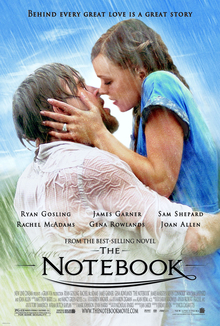
The Notebook is a 2004 American romantic drama film directed by Nick Cassavetes, with a screenplay by Jeremy Leven and Jan Sardi, based on the 1996 novel of the same name by Nicholas Sparks. The film stars Ryan Gosling and Rachel McAdams as a young couple who fall in love in the 1940s. Their story is read from a notebook in the present day by an elderly man, telling the tale to a fellow nursing home resident.

Advertisements for Myself is an omnibus collection of fiction, essays, verse, and fragments by Norman Mailer, with autobiographical commentaries that he calls "advertisements." Advertisements was published by G.P. Putnam's Sons in 1959 after Mailer secured his reputation with The Naked and the Dead, then endured setbacks with the less-enthusiastic reception of Barbary Shore (1951) and The Deer Park (1955). Advertisements, though chaotic, unapologetically defiant, and often funny, marks the beginning of Mailer's mature style.

Ryuk is a fictional character in the manga series Death Note, created by Tsugumi Ohba and Takeshi Obata. He is a Shinigami that drops a Death Note, a notebook that allows the user to kill anyone simply by knowing their name and face, into the human world to find relief from the boredom of his own realm. It is picked up by Light Yagami, a bright high school student who uses it in an attempt to create and rule a utopia cleansed of evil, with him at the helm as a "god".
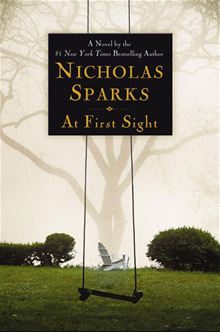
At First Sight is a 2005 romance novel by Nicholas Sparks. Set in North Carolina, At First Sight is the sequel to Sparks's previous book, True Believer, written in the same year. At First Sight was originally the result of a 45-page epilogue in True Believer. Sparks’s editor thought this was too long for an epilogue and damaged the effect of True Believer. It was then that Sparks got the idea to write At First Sight as its predecessor.
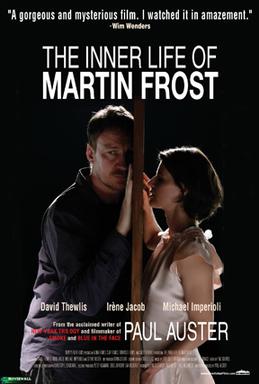
The Inner Life of Martin Frost is a 2007 American romantic-mystery drama film directed by Paul Auster and starring David Thewlis, Irène Jacob, and Michael Imperioli. Written by Paul Auster, the film is about an author who having just completed his fourth novel travels to his friends' vacant country house to spend a few weeks alone. There he meets a beautiful and mysterious woman who inspires him to write a new story. Filmed in Azenhas do Mar in Sintra, Portugal in the spring of 2006, The Inner Life of Martin Frost is Auster's fourth film as director and writer. The film premiered at the New Directors/New Films Festival on March 21, 2007, and was released in the United States on September 7, 2007.

The Short Fiction of Norman Mailer is a 1967 anthology of short stories by Norman Mailer. It is grouped into eight thematic sections and contains nineteen stories, many appearing in one of Mailer's miscellanies; thirteen were published in periodicals or other anthologies before appearing in this collection. The collection was reprinted in hardcover in 1980 and some of the stories were reprinted in other volumes.



















